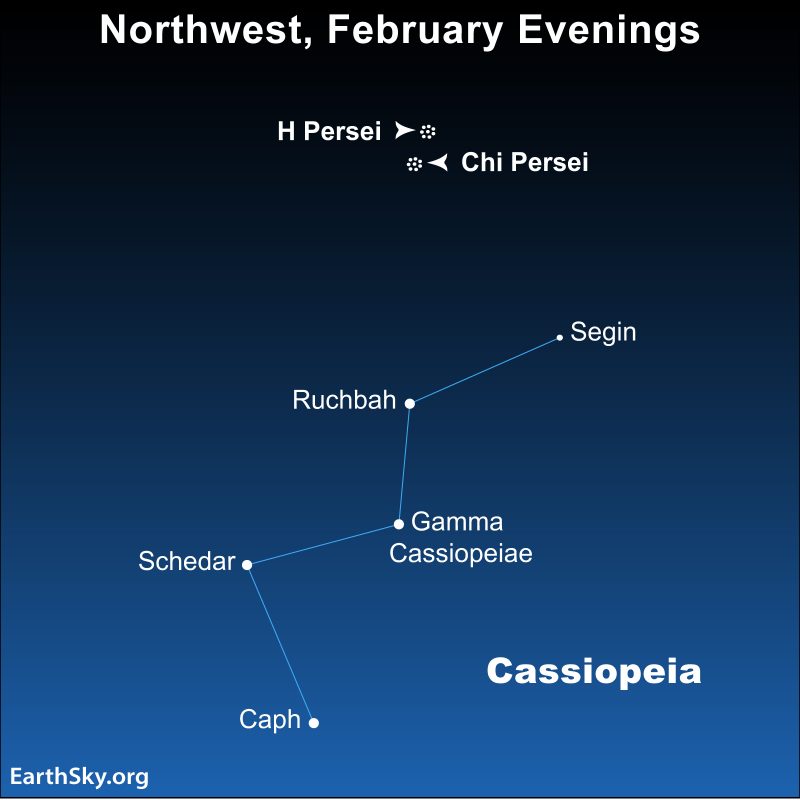Earthsky
2M
357

Image Credit: Earthsky
Cassiopeia the Queen reigns in the February sky
- Cassiopeia the Queen can be found in the northwest sky in the evening around February, resembling an M or W shape, with the Double Cluster in Perseus visible above it.
- As late winter transitions into early spring, Cassiopeia descends in the northwest after nightfall, presenting a distinctive W or M form that is easy to spot.
- Cassiopeia's five bright stars, forming the W shape, include Segin, Ruchbah, Gamma Cassiopeiae, Schedar, and Caph.
- Cassiopeia can be used to point towards the Andromeda galaxy, located opposite the Big Dipper in the northern sky.
- Neighboring star clusters in Perseus, such as the Double Cluster, present an interesting binocular viewing opportunity in dark skies.
- In Greek mythology, Cassiopeia was a vain queen whose boastfulness led to a sea monster attacking her kingdom until Perseus intervened.
- Cassiopeia's position changes throughout the year, appearing as an M or W depending on the season, with lore depicting her as a celestial figure.
- This constellation's tale serves as a reminder of vanity's consequences, with Cassiopeia's celestial form reflecting her prideful nature.
- Observing Cassiopeia offers a captivating stargazing experience, especially during late winter and early spring nights.
- The captivating lore and distinct shape of Cassiopeia make it a prominent feature in the night sky, easily identifiable and rich in mythological significance.
Read Full Article
21 Likes
For uninterrupted reading, download the app